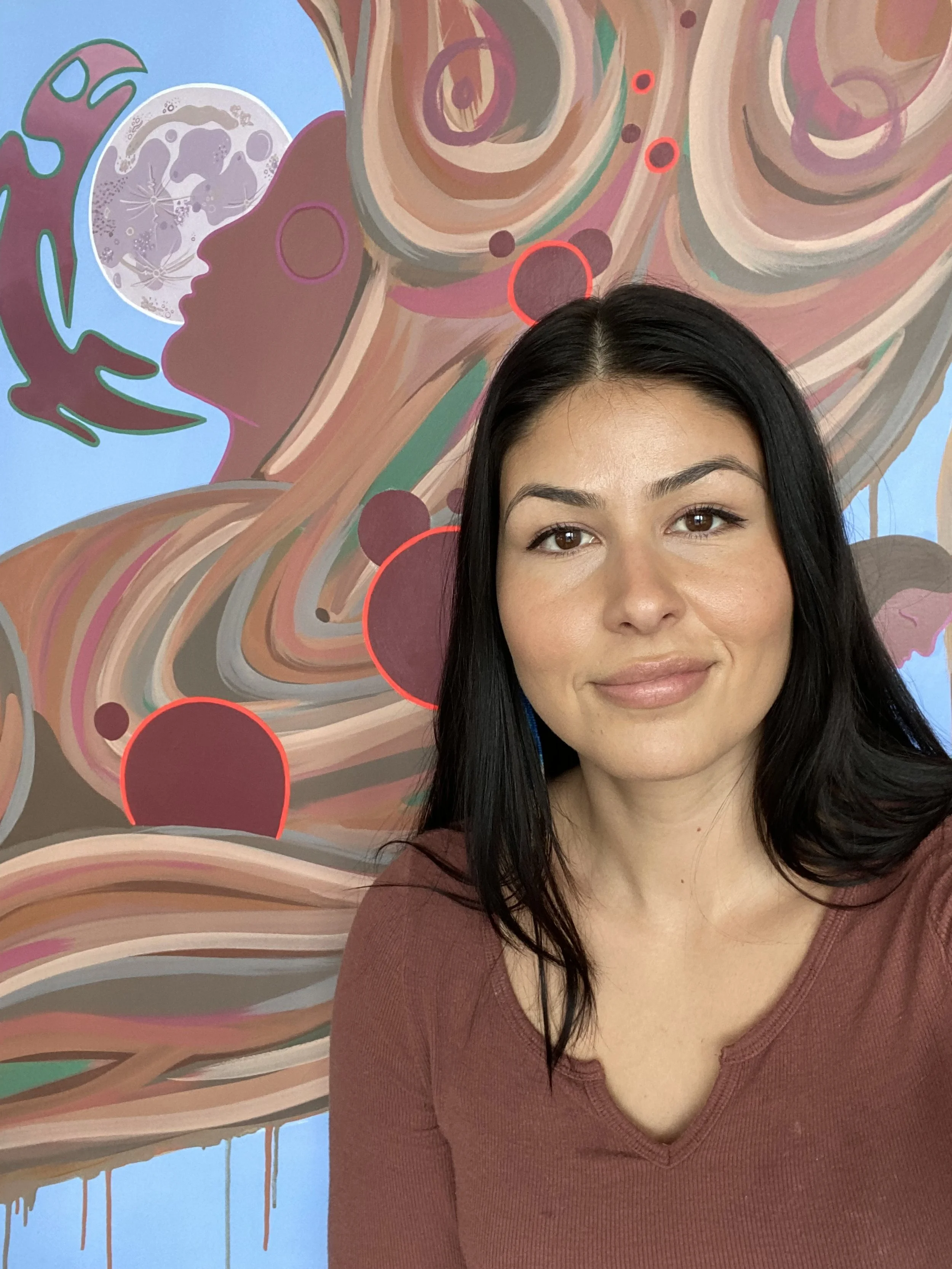Quill Christie-Peters is an Anishinaabe educator and self-taught visual artist currently residing in Northwestern Ontario. She is the founder and director of the Indigenous Youth Residency Program, an artist residency for Indigenous youth that engages land-based creative practices through Anishinaabe artistic methodologies. She holds a Masters degree in Indigenous Governance on Anishinaabe art-making as a process of falling in love and sits on the board of directors for Native Women in the Arts. Her written work can be found in GUTS Magazine and Tea N’ Bannock and her visual work can be found at @raunchykwe.
Artist Statement
My work centers on an Anishinaabeg conception of art-making that focuses on the processual building, strengthening and reclamation of all my relations through artistic practice. When I paint, I enter into a conversation with my ancestors and those relations that exist beyond the material plane, making my practice an explicitly spiritual one that allows me to communicate knowledge I cannot otherwise express. Inherently, my work is about Anishinaabe futurisms and how our relationships to our ancestors must inform and shape our trajectories to the decolonial future, particularly in the context of displacement and urban Indigenous realities. As well as exploring my own spiritual landscape, my practice involves curating and facilitating collaborative Indigenous youth-based projects embodied through radical relationality. In this work we enact accountability to one another through our collective artistic practice while also exploring and strengthening the relationships settler colonialism seeks to destroy. Although I have explored various media and materials, I am by and large an acrylic painter. I stand on the shoulders of Anishinaabe artists who have always practiced art-making as an enactment of governance both over the self and extending outward to the nation. I stand lovingly on the shoulders of my own family of Anishinaabe artists who, within the violence of colonialism, have always used art as a tool for storytelling, resistance, survival and most importantly, for creatively envisioning Anishinaabe futurities.
